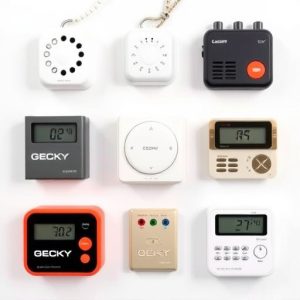Emergency Phone Alerts: Location Sharing for Personal Safety
Emergency phone alerts featuring the Personal Safety Siren leverage GPS and advanced tech to rapidly…….
Emergency phone alerts featuring the Personal Safety Siren leverage GPS and advanced tech to rapidly communicate critical situations, prioritizing genuine life-or-death incidents and minimizing false alarms. While this system enhances response times, it faces challenges like misuse and privacy concerns. To maximize efficacy, users should customize alert settings, test features regularly, stay informed about details, and maintain current contact lists, balancing these measures with responsible usage to avoid false alarms and protect privacy during genuine threats.
In today’s digital age, emergency phone alerts with location sharing have emerged as powerful tools for personal safety. Understanding how these systems work is crucial in distinguishing between genuine threats and what might be a false alarm. This article explores the benefits of location sharing during emergencies, delves into potential challenges like misuse cases, and offers best practices to ensure effective utilization of these critical alerts. Stay informed to keep yourself and your loved ones safe with the Personal Safety Siren.
- Understanding Emergency Phone Alerts: How They Work
- Benefits of Location Sharing During Alerts
- Potential Challenges and Misuse Cases
- Best Practices for Utilizing Emergency Alerts Effectively
Understanding Emergency Phone Alerts: How They Work
Emergency phone alerts are a critical tool for personal safety, designed to notify users and emergency services of potential dangers or incidents. These alerts work by utilizing advanced technology, often integrated with GPS location sharing, to detect and communicate critical situations. When an individual’s device senses an emergency, such as a severe weather event or a sudden accident, it triggers the Personal Safety Siren, sending out an alert signal.
The alert is immediately transmitted to nearby emergency response centers and authorized authorities, who can then swiftly assess the situation. This real-time location sharing ensures that help arrives promptly, even in remote areas where traditional communication networks might be compromised. It’s important to note that these systems are designed to minimize False Alarms, employing sophisticated algorithms to distinguish genuine emergencies from routine activities, thus preserving resources for genuine life-or-death situations.
Benefits of Location Sharing During Alerts
Location sharing during emergency phone alerts significantly enhances personal safety, serving as a powerful tool to ensure swift response times for emergency services. Unlike the traditional method of manually providing location details, which can be time-consuming and prone to errors, location sharing automates this process. This feature ensures that first responders have accurate, real-time data about the user’s precise location, enabling them to arrive at the scene faster and more prepared.
The ability to differentiate between genuine emergencies and false alarms is crucial. Location sharing can help mitigate “False Alarm” situations by providing concrete evidence of a true crisis. This technology acts as a Personal Safety Siren, loud enough to signal distress without unnecessary panic. By sharing location data, users enable authorities to verify the authenticity of an alert, thereby reducing non-emergency response times and conserving critical resources for genuine life-threatening situations.
Potential Challenges and Misuse Cases
While emergency phone alerts with location sharing offer a powerful tool for personal safety, there are potential challenges to navigate. One significant concern is the risk of false alarms, where individuals may inadvertently trigger the system due to misunderstandings or unexpected situations. This can lead to unnecessary panic and strain on emergency services.
Misuse cases also pose a threat. Malicious actors could exploit these systems by intentionally setting off alerts to cause disruption or even harm. Moreover, privacy concerns arise when considering who has access to an individual’s location data and how it is shared during an emergency. Balancing the benefits of this technology with these challenges is crucial to ensure its effectiveness and prevent unintended consequences.
Best Practices for Utilizing Emergency Alerts Effectively
To make the most of emergency phone alerts with location sharing, users should adopt best practices that ensure their safety and minimize false alarms. Firstly, it’s crucial to review and customize your alert settings according to your specific needs and risks. Enable alerts for relevant emergencies such as severe weather, fires, or public safety threats. Additionally, regularly test these features to confirm they’re functioning properly; practicing mock emergency scenarios can help differentiate genuine alerts from false ones.
Another best practice is staying informed about the nature of the alert and verifying the information before taking action. Keep your contact lists up-to-date so that accurate location data can be shared promptly. Moreover, understand that sharing precise locations during emergencies not only aids responders but also requires responsible usage to prevent unwarranted intrusion or privacy breaches. Remember that a “Personal Safety Siren” should be reserved for genuine threats to ensure its effectiveness in critical situations.
Emergency phone alerts with location sharing are powerful tools that can significantly enhance personal safety. By understanding how they work, recognizing their benefits, and being aware of potential challenges like false alarms, users can ensure these systems operate effectively to keep them and their loved ones secure. Adhering to best practices, such as verifying alerts before acting and maintaining privacy settings, will help maximize the positive impact of these technologies in times of need.


